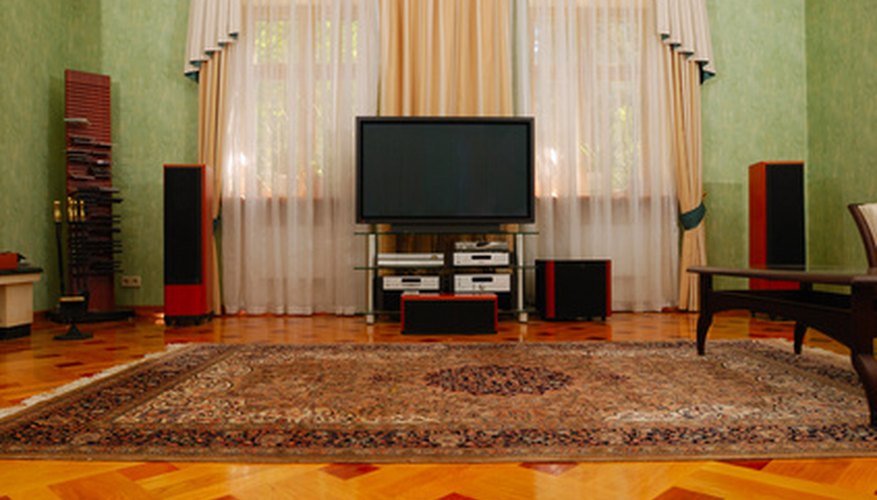Running wires to the rear speakers in a home-theatre system is always a dicey affair. Hardwood floors eliminate what is arguably the easiest option: fishing the wire underneath the carpet. However, that doesn't mean you can't enjoy both hardwood floors and home theatre in the same room, You'll just have to employ different strategies.
Carefully run a razor or utility knife along where the top of the moulding meets the wall to cut the paint seal.
Remove the base mouldings from the wall(s) where you plan to run the speaker wire. Starting at the first stud of the moulding, gently shimmy the end of the pry bar between the moulding and the drywall and carefully pull back to separate the moulding from the wall. Move over to the next stud and repeat until you can pull the entire piece of moulding away from the wall. Be gentle as not to crack the moulding.
- Running wires to the rear speakers in a home-theatre system is always a dicey affair.
- Starting at the first stud of the moulding, gently shimmy the end of the pry bar between the moulding and the drywall and carefully pull back to separate the moulding from the wall.
Store the moulding out of the way so that it doesn't get stepped on or broken.
Look at the edge of the floor where it meets the wall. Hardwood flooring often has a space between the edge of the planks and the wall, which allows the floor to expand. One option would be to run the wire in this space, assuming it's large enough, and then cover it up with the moulding. If the floor is new, however, it may expand and damage your wiring.
If running the wire along the edge of the floor isn't feasible, create a channel in the wall behind the moulding in which you can run the wire through. If you don't want to do the work yourself, you can find moulding or channels made specifically for running speaker wire.
- Store the moulding out of the way so that it doesn't get stepped on or broken.
- If running the wire along the edge of the floor isn't feasible, create a channel in the wall behind the moulding in which you can run the wire through.
Cut a small channel into the wall. Do not cut all the way through the wall board so you don't hit anything inside the wall, and make sure not to cut above the height of the moulding. Make a shallow channel with your drywall saw or knife.
Notch the studs so that you are able to run the wires straight past them. Use a saw or chisel to cut a small notch in the bottom of the stud along the path of your wire.
- Cut a small channel into the wall.
- Use a saw or chisel to cut a small notch in the bottom of the stud along the path of your wire.
Run the wire through your drywall or moulding channel.
Install metal nail plates around your wire on each of the studs to prevent nails from penetrating the wire.
Reinstall the mouldings onto the wall with finishing nails.
Repeat Steps 1 through 6 for any other moulding that is in the path of your speaker wire.
TIP
Avoid crimping the wire at corners. Keep it rounded for the best performance. Other methods for wiring with hardwood include using flat, paintable wiring directly on the wall or baseboard, running the wire through the walls and wiring through the a basement or attic below or above the audio room.
